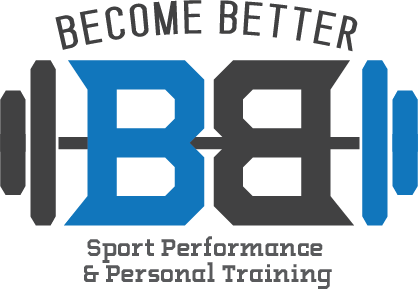A Practical Guide for Training Around Pain: Lower Body
For a full understanding of our approach to training around pain, check out our article from a few weeks ago titled Training Around Aches & Pains in the Gym. In that article, we lay out the basic four-step process we use to manage pain in the gym. This article and the next will be more practical, including real world examples of how to implement the process when dealing with pain in the lower body during squatting, deadlifting, or lunging type exercises.
For the sake of not being repetitive, steps 1 and 2 in the pain management process are always the same for pain in any joint or muscle.
Any Ache/Injury, Regardless of Where it is:
Step 1
Do not freak out about your pain. If you experience pain in the gym, remain calm and remember that humans are resilient, not fragile.
There is a very low risk of serious injury in recreational weight training with a relative risk of 0.0035 injuries every 100 participation hours. Compare this injury risk to sports like soccer or basketball which both have injury rates of more than 1 for every 100 participation hours (1).
Once you’ve assured yourself that you’re ok and you are not seriously injured, move on to step 2.
Step 2
Find the weight at which the symptoms start. You may notice that you can lift the empty bar with no pain, 95lbs with no pain, 135lbs with no pain, and 155lbs with no pain, but once you go over 155lbs you start experiencing symptoms. This means you should do the majority of your work under 155lbs until your symptoms calm down. If you can’t even lift the empty bar without pain, move on to step 3.
Find the volume threshold at which your symptoms begin. If you notice that you experience a lot of pain when you have high volume workouts such as 4 sets of 10, 5 sets of 8, or 6 sets of 6, but not when you have lower volume workouts such as 3 sets of 8, 4 sets of 5, or 5 sets of 3, then you should do the majority of your work at lower volumes until your symptoms calm down and slowly work your way back up to higher volumes over time. If you feel like you can’t even manage low volume workouts with minimal pain, move on to step 3.
Now let’s get on to the specific examples of how to implement steps 3 and 4 of our pain management process for pain in the lower body. Always remember to address steps 1 and 2 first before moving on to steps 3 and 4 for each example listed.
Pain While Squatting, Deadlifting, or Lunging
Step 3
Reduce the range of motion you’re using for the exercise that’s giving you problems.
Deadlifts:
Try deadlifting from blocks so that the bar is starting at mid shin or at your knees rather than deadliting from the ground. You could also try floating deadlifts (deadlift w/out touching the ground) if you experience pain with full ROM deadlifts.
Squats
Try squatting to a high box, or cutting the depth of your squats above parallel instead of squatting all the way down to where your butt touches your calves.
Lunges
Lunge down only as far as you can without discomfort, then stand back up instead of lunging down to where your knee touches the ground
Step 4: Switch Exercises
A few alternatives that train similar muscles and movement patterns to the back squat include lower bar or higher bar back squats (moving the bar either up or down a few inches on your back), front squats, goblet squats, leg presses, or TRX squats.
A few alternatives for the conventional deadlift include sumo deadlifts, RDLs, good mornings, trap bar deadlifts, halting deadlifts, and glute bridges.
A few alternatives to the lunge include step-ups, split squats, single leg presses, single leg squats to a box, leg extensions, and leg curls
If you are experiencing pain in the gym during squats, deadlifts, lunges, or similar, try using some of the examples listed above to help you train around the pain. All of the examples can be used alone in isolation or they can be combined. For example, if you experience knee pain while back squatting but not while doing high box squats or front squats, you could do high box squats on one day and do front squats on another day. As your symptoms decrease, you can slowly work your way back to normal training with heavier weights, more volume, and full range of motion. Be on the lookout next week for a similar article dedicated to training around upper body aches and pains.
Reference:
(1) Hamill, B. P. (1994). Relative Safety of Weightlifting and Weight Training. Journal of Strength and Conditioning Research,8(1), 53-57. doi:10.1519/00124278-199402000-00008

